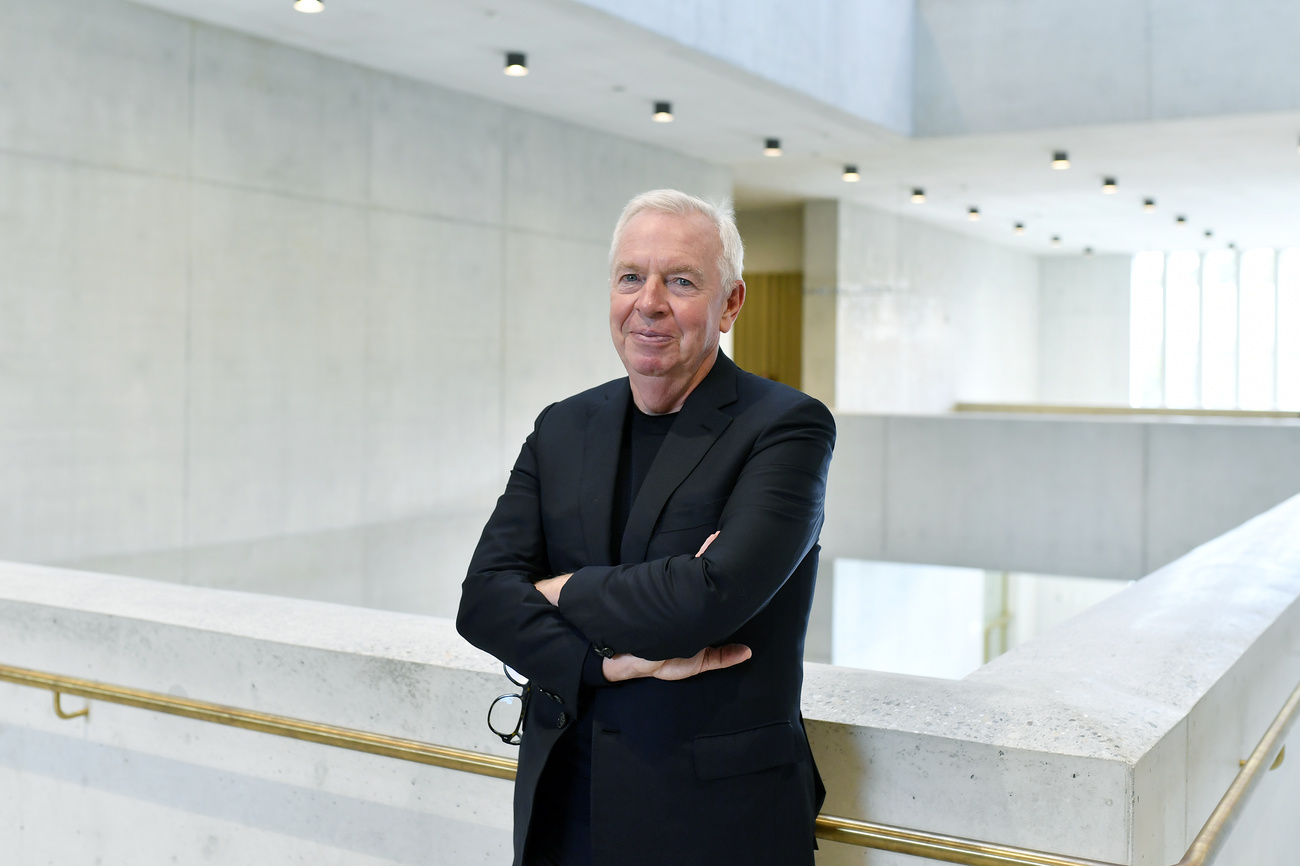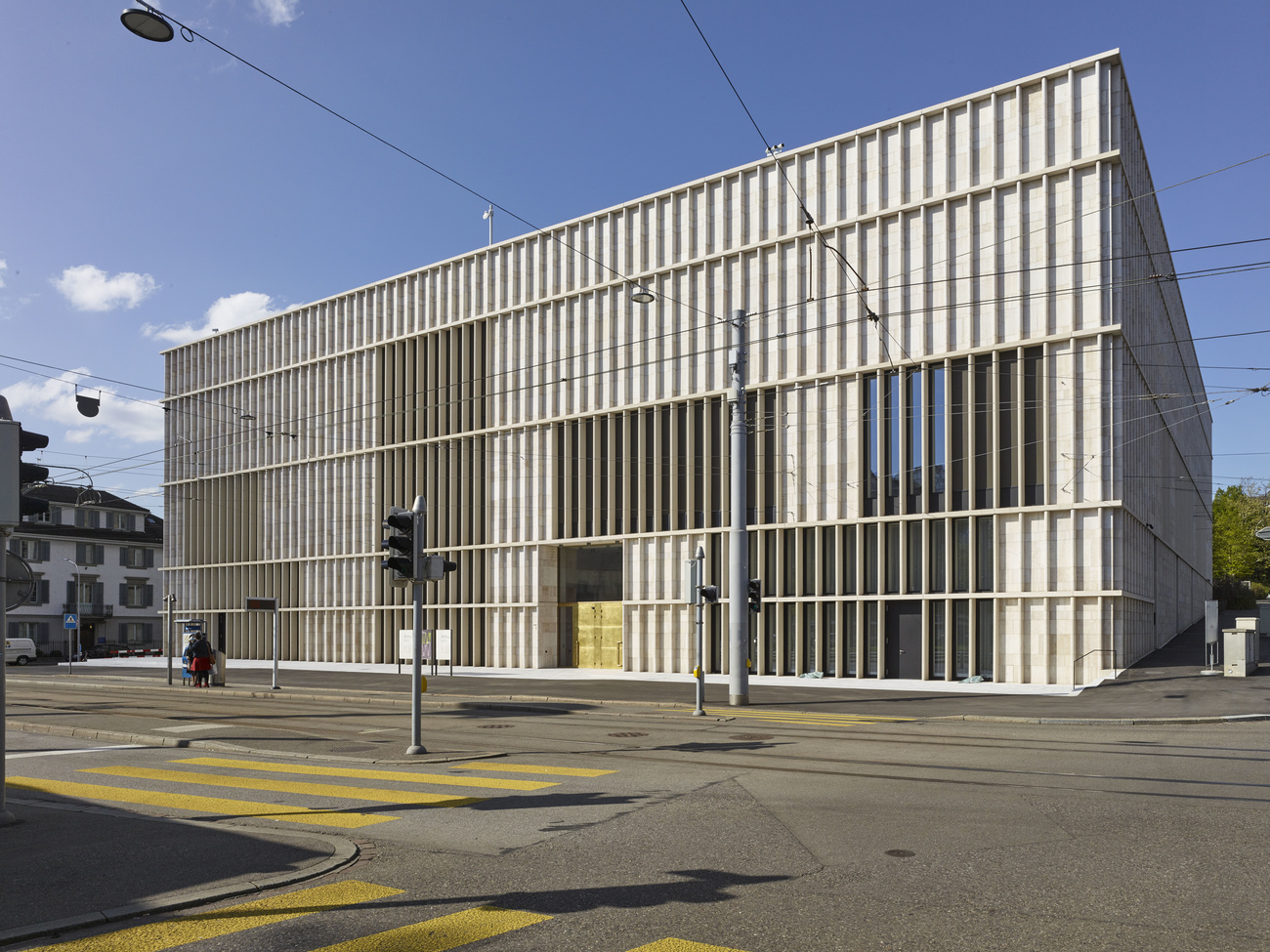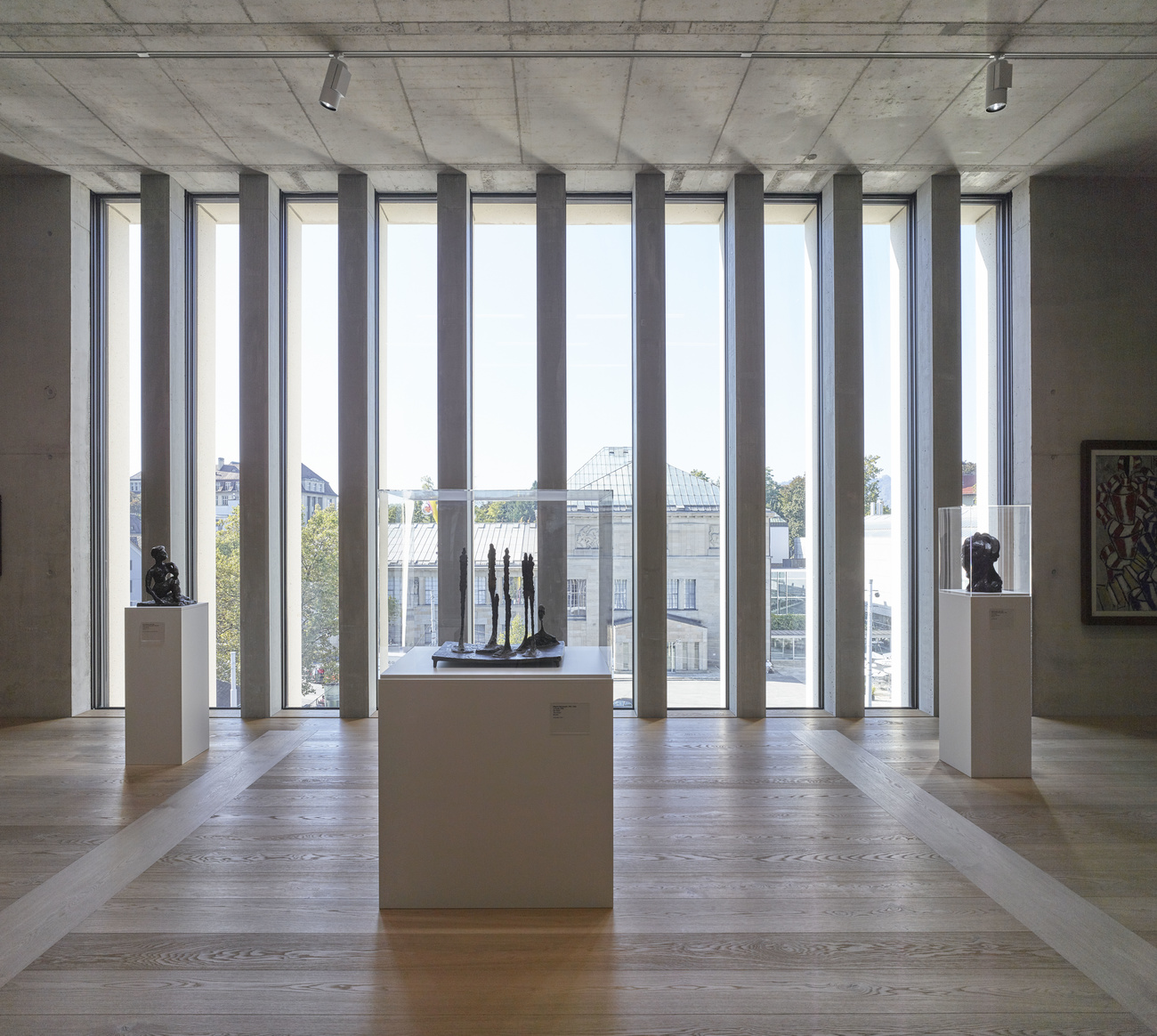
David Chipperfield: praised internationally but criticised in Zurich

The architect of the latest extension of the Swiss art musem Kunsthaus Zurich has won the Pritzker Prize. Not everyone is a fan.
On March 7, Sir David Chipperfield was awarded the Pritzker Prize, considered the most prestigious honour in architecture and worth $100,000. His extensive oeuvre covers almost all scales and continents, from small museum buildings in England or Mexico to the spectacular America’s Cup Building in Valencia, from a chapel in Japan to the headquarters of the BBC in Scotland and other high-rise complexes in Asia.
Switzerland can also bask in his latest glory. His new building is not the first, but the largest extension for the Kunsthaus Zurich. It complements the existing exhibition space by a good 5,000 square meters. On the whole, however, the new building even doubles the museum space and makes the Kunsthaus Zurich the largest art museum in Switzerland.
Founded by Jay and Cindy Pritzker in 1979, the choice of recipients was quite conventional: in its first 22 editions all the winners were male architects above the age of 50. It was also only in 2000 that the award could be conferred on more than one person. This rule change resulted in first Swiss team honours: Jacques Herzog and Pierre de Meuron from Basel.
The zeitgeist still has an effect on the list of award winners today: in 2004, Zaha Hadid, who has since passed away, was the first woman to be honoured. Others, younger, and even three-person teams followed.
Over the past three years, the jury has consistently followed the signs of the times and in 2020 honoured the Dublin-based Grafton Architects, an all-female team; Anne Lacaton and Jean-Philippe Vassal, two architects known above all for conversions and minimal interventions, and Francis Kéré in 2022 the first awarded architect of African origin.

Polarized views
Chipperfield’s choice for the Kunsthaus Zurich’s extension has polarized the city since the decision was made in 2008, and even more so since the opening of the building in 2021.
Initially, the focus was primarily on the size of the building, but then the heated and fierce debates penetrated deep into the museum itself, shedding a light on collections burdened with war history as well as into the opaque documentation and financing models of the privately organised art association – the Zürcher Kunstgesellschaft – that oversees the running of the museum.
The biggest controversy was caused by a decision to host the collection of former arms dealer Emil Bührle, who made a huge fortune during the Second World War. The new director of the Kunsthaus, Ann Demeester, is under great pressure to bring more transparency to the dark history of the Bührle collection.
The building also came in the firing line. The publicly accessible hall, which is also a passage, is perceived as too closed behind the stone veil. The architecture Professor Philipp Ursprung described it as a “monument to isolation”.
Chipperfield saw it differently: Thanks to the large and bright new rooms, the Kunsthaus would be more accessible to the public, he said in the small booklet prepared for the opening of the Kunsthaus, namely “a place to go”.
As elegant as the natural stone façade may seem, the size of the overall building is not cancelled out. The Kunsthaus is a graceful block to which many Zurich residents have not yet become accustomed. SWI swissinfo.ch can recommend the Kunsthausbar, also designed by David Chipperfield Architects, with the large mural “Pétales et jardin de la nymphe Ancolie” by Max Ernst.
Size is also a perennial issue in the discussions about Zurich’s Europaallee, where David Chipperfield also designed a house together with Max Dudler and Gigon/Guyer Architekten. The block of four office buildings occupies 14,600 square metres of space for a major Swiss bank.

Acknowledging the commitment to the climate
Chipperfield’s architecture is never art for art’s sake, writes the jury of the Pritzker Prize in its statement. His merits went far beyond the elegance and stringency of his architecture. This pursues with care, craftsmanship and great calmness, it continues, a “higher purpose and the effort for the social and public good”.
The architect, who turns 70 years old this year, demonstrates his commitment that goes far beyond architecture with his latest passion, a foundation in Galicia in northwestern Spain. There he sees his task in finding new ways to improve life and living conditions on our threatened planet. His Fundación RIA wants to contribute to the preservation of diverse landscapes, agriculture, ecology, and regional traditions.
With this year’s choice, the Pritzker Prize still remains true to the zeitgeist: architects should continue to contribute to the design of the built environment with their buildings – and in the best case with “rigor, integrity and relevance” like David Chipperfield. If they also show social and environmental commitment, they deserve a Pritzker Prize.

In compliance with the JTI standards
More: SWI swissinfo.ch certified by the Journalism Trust Initiative









































You can find an overview of ongoing debates with our journalists here . Please join us!
If you want to start a conversation about a topic raised in this article or want to report factual errors, email us at english@swissinfo.ch.